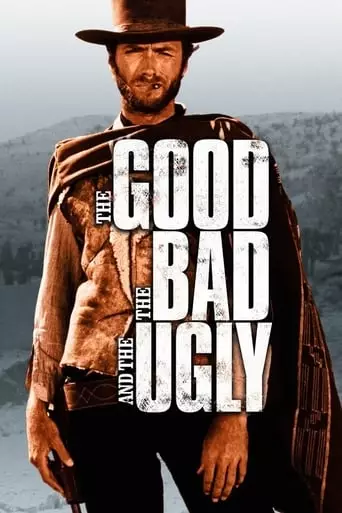
The Good, the Bad and the Ugly (1966) Watch Online Free
While the Civil War rages on between the Union and the Confederacy, three men – a quiet loner, a ruthless hitman, and a Mexican bandit – comb the American Southwest in search of a strongbox containing $200,000 in stolen gold.
The Good, the Bad and the Ugly (1966), directed by Sergio Leone, is the third installment in the Dollars Trilogy and a landmark in the Spaghetti Western genre. The film follows three gunslingers—Blondie (Clint Eastwood), Angel Eyes (Lee Van Cleef), and Tuco (Eli Wallach)—as they vie for a hidden cache of Confederate gold during the American Civil War.
Blondie, the Good, is a stoic and skilled bounty hunter who partners with Tuco, the Ugly, a bandit with a quick temper. Their partnership is transactional; Blondie turns Tuco in for the reward and then rescues him at the last moment, sharing the bounty. Angel Eyes, the Bad, is a merciless mercenary who seeks the gold for himself. The narrative intertwines their paths as they navigate treacherous alliances and confrontations, leading to a climactic three-way standoff in a cemetery.
Leone’s direction is characterized by his signature use of close-ups and wide shots, creating a tense and atmospheric experience. The film’s pacing is deliberate, building suspense through minimalist dialogue and intense action sequences. Eastwood’s portrayal of Blondie is stoic and enigmatic, embodying the anti-hero archetype that would become a staple in Western cinema. Wallach’s performance as Tuco adds depth and complexity to the narrative, portraying a character driven by both greed and a sense of humor. Van Cleef’s portrayal of Angel Eyes is chilling, embodying the ruthless nature of his character.
The Good, the Bad and the Ugly delves into themes of morality, greed, and the human condition. The film presents a morally ambiguous world where characters operate outside traditional notions of good and evil. Blondie’s actions, while self-serving, challenge the existing power structures, suggesting a critique of societal norms. The film also explores the concept of the outsider, with each character operating outside the law, yet adhering to their own codes of conduct.
The film’s portrayal of the Civil War backdrop adds depth to the narrative, highlighting the chaos and moral ambiguity of the era. The characters’ pursuit of gold amidst the backdrop of war underscores the futility and destructiveness of human greed.
The Good, the Bad and the Ugly had a profound impact on the Western genre. It refined the Spaghetti Western formula established by its predecessors, introducing more complex characters and deeper narrative elements. The film’s success solidified Clint Eastwood’s status as a leading figure in Hollywood and further established Sergio Leone’s reputation as a master of the Western genre.
The film also influenced the portrayal of anti-heroes in cinema, moving them away from being mere antagonists to more nuanced characters with their own codes of honor. This shift added depth to the genre and paved the way for more complex storytelling in Western films.
After watching The Good, the Bad and the Ugly, you may feel a sense of awe at its innovative storytelling and direction. The film’s intense action sequences and moral complexities are likely to leave a lasting impression. You might also appreciate the film’s influence on the Western genre and its role in shaping modern cinema.
In summary, The Good, the Bad and the Ugly is a landmark film that redefined the Western genre. Its compelling narrative, complex characters, and stylistic direction make it a must-watch for both film enthusiasts and casual viewers.
